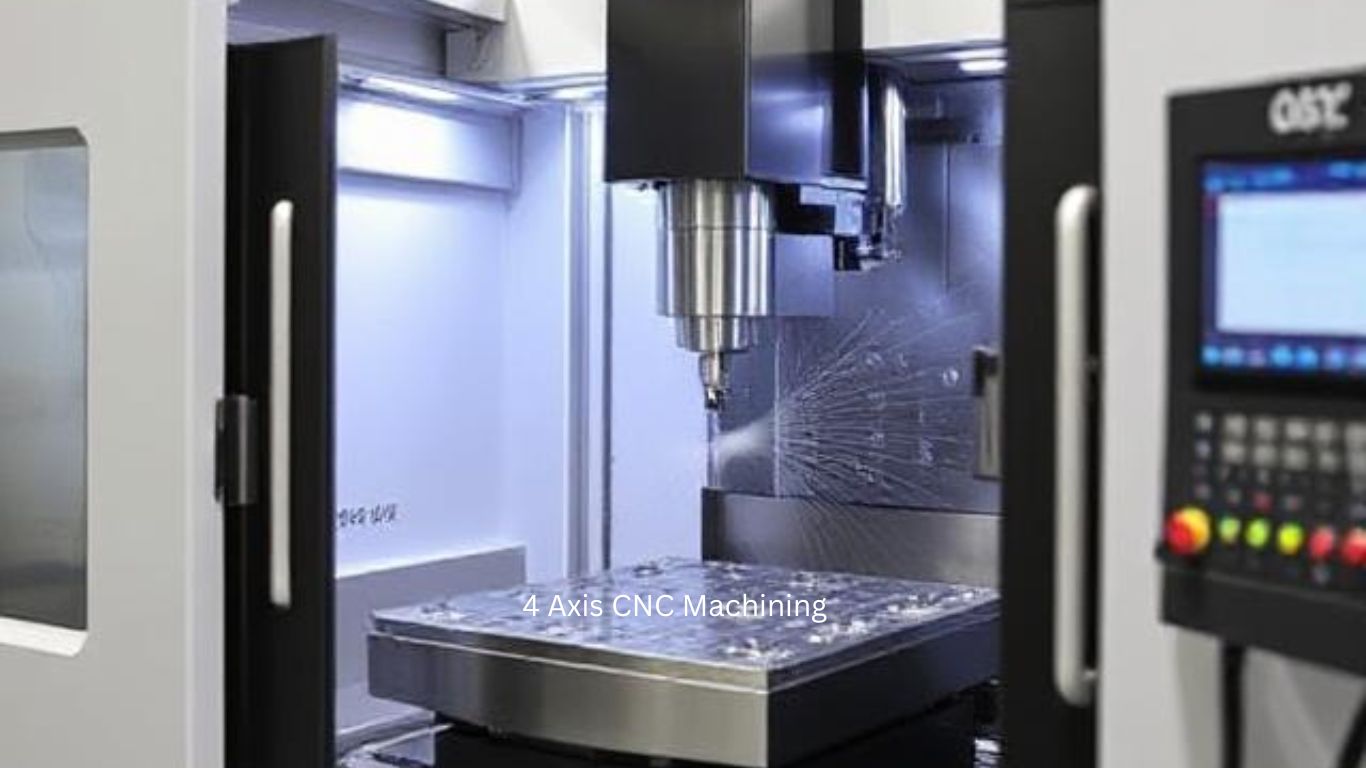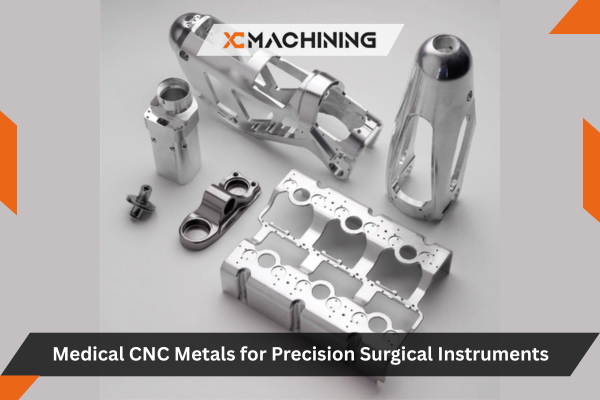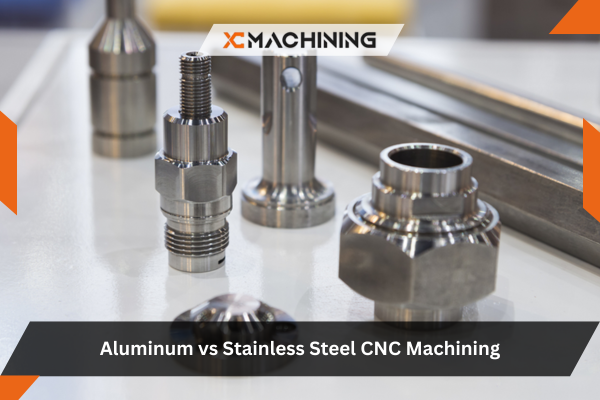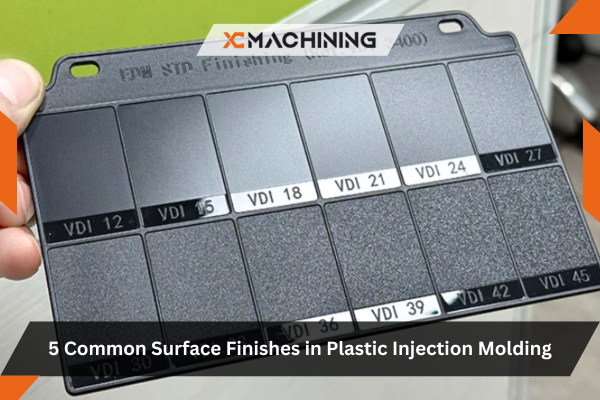It is likely that you have heard of how effective rapid prototyping is. But you might be wondering how it is possible to achieve both speed and accuracy. Let me introduce you to 4 Axis CNC Machining. With this specific machining, you are able to create prototypes that best suit your design vision while saving on a lot of time and guesswork.
In the event that you’re looking for prototyping equipment that deliver rapid prototyping services, 4 Axis CNC Machining has faster turnaround times, better part precision, improved design adaptability, less time needed for set up, and better surface finishes. In this post, we are going to explore the scope of 4 Axis CNC Machining as it relates to rapid prototyping. We will also look at its popular uses, primary benefits, tips for best practices, and which materials are best suited for it.
So, let’s go ahead! 4 Axis CNC Machining: The Key To Rapid Prototyping This is amazing prototyping method doesn’t only have an additional axis. It has the potential to change the speed and accuracy of the work completely. Adding rotation to the piece enables complex geometries to be machined in less tool changes. This directly aids rapid prototyping as it simplifies production steps, improves quality, and accelerates the entire development cycle. Enhancing Speed And Precision The addition of an extra rotary axis facilitates access to the machining surfaces of the part without the need to reposition the workpiece. This increases accuracy, decreases machining time, and helps maintain dimensional consistency.
4 Axis CNC Machining: The Key To Rapid Prototyping
Automation leads to fewer processes requiring manual work, reducing the amount spent on labor. This also eliminates human-induced errors, thus minimizing material waste and the expenses incurred during prototyping.
Enhancing The Complexity Of The Design
4 Axis CNC Machining allows for the manufacturing of components with sophisticated profiles and undercuts. This automatically means that the prototypes that you create are able to conquer advanced shapes, which puts you ahead of your contemporaries.
The Importance Of Precision In Rapid Prototyping
Every prototype is built on the idea of accuracy. Any mistakes in dimension or an unrefined surface finish will not only degrade the aesthetic of the part, but will also impair its functionality. 4 Axis CNC Machining improves accuracy by maintaining tight tolerances, ensuring that the shape of your prototype is how you wish it to be.
With accurate prototypes, it becomes easier to identify any mistakes at an earlier stage. This permits changes to be made to the CAD models before the time-consuming process of mass production begins. To sum it up, accuracy enables the saving of resources, time, and frustration.
Info Box: ResearchGate has highlighted in one of their studies that if the accuracy of the prototype is not maintained, the product launch will most likely be significantly delayed.

Typical Uses Of 4 Axis CNC Machining These days
4 Axis CNC Machining seems to be a perfect fit in dozens of spaces. You may observe it during the manufacturing of turbine blades and engine parts in the aerospace industry. In the medical industry, it assists in shaping complex surgical instruments.
Even the automotive world benefits from precise gears and custom engine parts.
If you need prototypes with curved surfaces or multiple holes at odd angles, 4 Axis CNC Machining can be your best friend. This versatility lets you design freely, and knowing your chosen process can help you realize your creative ideas.
Tip: Ensure that you compile all the prominent features before proceeding with the prototype design. Also, analyze which surfaces or angles will need the requirement of the fourth axis for machining purposes. This will aid you in streamlining the design from the beginning.
Step-wise description
The single biggest hurdle in rapid prototyping is usually the CAD model. With that out of the way you can move on to exporting it in the CAM software for toolpath generation. Next, the material block is loaded into the 4 Axis CNC Machining center, where it is secured via a vice. Then, the machine starts shaping the block while rotating it.
Import Your Model: Accurate toolpaths will be determined based on the CAD data.
Toolpath Generation: The movement of the cutting tools is determined by the software.
Fixture Setup: The workpiece is securely clamped to support the tool movement.
Machining: The shape is carved out by the machine rotating the part as necessary.
Finishing – Final touches may include smoothing sharp edges or polishing surfaces.
Choosing The Right Materials
Material selection plays a huge role in how successful your prototype will be. If you need a light but strong part, aluminum is often the go-to. For medical prototypes, stainless steel may be the right pick for durability and sterilization needs. Plastics, like ABS or nylon, can also be ideal if you want something lightweight and cost-effective.
Suggestion Box: If you’re unsure which material is best, run a smaller test piece first. This pilot trial helps you see how the material behaves under the machining conditions of 4 Axis CNC Machining.
Machine Setup And Programming Tips
Setting up a 4 Axis CNC Machining operation involves positioning your rotary table or trunnion so you can easily access all sides of the workpiece. You also need to calibrate your cutting tools and define the correct tool offsets in your CNC control software.
Fact Box: High-end CAM software often includes automated collision detection, which warns you if your tool or machine might crash into the part.
Programming might look intimidating, but modern software guides you through selecting the right tools, feeds, and speeds. Always verify your program with a simulation before letting the machine run. This helps catch any accidental oversights and ensures your prototype remains intact.
Cost Factors To Consider
Although 4 Axis CNC Machining can feel more expensive than simpler methods, it often ends up saving money. Why? You reduce the need for multiple setups, extra fixtures, and time-consuming reorientations. When your parts need multiple complex features, a fourth axis cuts down labor time.
Still, expect a learning curve if you’re new to 4 Axis CNC Machining. You might need to invest in quality software and training. Over time, these investments pay off in faster, better, and cheaper prototypes, which is the essence of rapid prototyping.
Danger Box: If you skip training or buy subpar equipment, you’ll risk damaging expensive materials or creating flawed parts.
Quality Control Measures
Quality checks should be part of every rapid prototyping project. Common methods include using calipers, micrometers, or coordinate measuring machines (CMMs). With 4 Axis CNC Machining, you should pay special attention to the features of multiple faces of the part. Rotational misalignment can lead to inaccuracies, so measure carefully after each rotation-based operation.
Warnings Box: Skipping inspections until the very end is risky. Small dimensional errors can add up, resulting in a prototype that doesn’t meet your needs.
Maintaining a solid documentation trail helps you track changes. If something goes wrong, you can pinpoint exactly where the issue occurred in your machining or design steps.
Using Software Tools for Productivity
With the use of software, 4 Axis CNC Machining is made easier. Multiple CAM packages offer the ability to optimize toolpaths to cut down air-cuts and the overall machining time. Tool speeds and feeds can also be suggested with most if not all materials.
For faster prototyping, consider straight CAD-to-CAM approaches. This ensures that every change made within the design scope seamlessly integrates with the machining techniques employed, eliminating tedious file conversion.
Informational Box: Popular CAM programs as Fusion 360, Mastercam, and SolidCAM have specific modules for multi-axis machining, therefore facilitating the use of a fourth axis.
Addressing Typical Issues
Even the better designs could encounter problems. For instance, an example would be tool noise whereby a workpiece is not fastened tightly or there is abrasive machining taking place. Elevated feed rates can also lead to tool wear when there is too much cutting force applied, especially against a tough material.
If your geometry has misaligned features, check your setup position and tool offsets. Adjusting your rotary axis alignment is a great tip for dealing with some complicated problems.
Pro Tip: Make it a habit of changing worn tools with new ones.
Dull tools produce heat and poor surface finishes, slowing down rapid prototyping efforts.
Collaborating With Professional CNC Services
Maybe you’re excited about 4 Axis CNC Machining but lack the hardware or expertise. Outsourcing to a professional CNC shop can help. These professionals have the necessary machines and software and trained personnel to get high quality prototypes in a short amount of time.
Always communicate design details and tolerance levels. When your CNC partner understands the goals, they can align their processes to achieve optimal accuracy. This type of communication reduces friction in the workflow around rapid prototyping.
Suggestion Box: Before choosing a CNC service, check reviews or ask for referrals. A reputable shop will share testimonials with you without reluctance.
Sustainability And Future Trends:
In terms of development, the future of 4 Axis CNC Machining lies with the adoption of AI powered software.
Addressing sustainability is becoming a critical factor in manufacturing, and 4 Axis CNC Machining is no different. Fewer setups lower energy use, and eliminating waste materials reduces energy consumption even more. Newer machines now also have more efficient motors, reducing overall energy expenditure.
Imagine a machine that automatically adjusts speeds and feeds based on tool wear. Such real-time optimization will make rapid prototyping even quicker and more reliable.
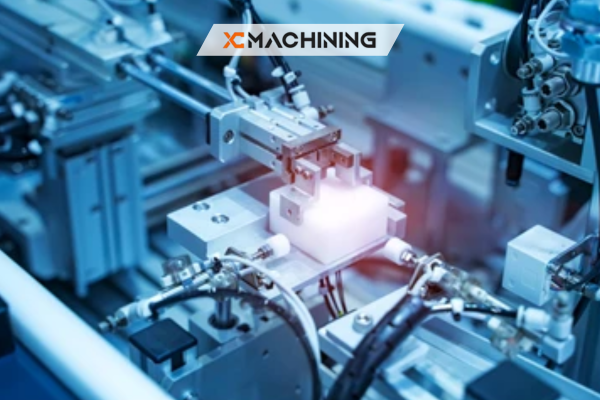
A Handy Comparison Table
Below is a quick comparison between traditional 3-axis machining and 4 Axis CNC Machining. This table should help you see why adding that fourth axis can be a game-changer for rapid prototyping.
| Feature | 3-Axis Machining | 4 Axis CNC Machining |
|---|---|---|
| Setup Complexity | Multiple reorientations needed | Fewer setups due to rotary axis |
| Accuracy | Risk of misalignment with manual re-fixturing | More precise since the axis rotates automatically |
| Production Speed | Slower for complex parts | Faster, especially for multi-faced components |
| Material Wastage | Higher if part reorientation is incorrect | Lower, thanks to fewer manual adjustments |
| Design Possibilities | Limited undercuts and angles | Supports complex geometries and multiple angles |
Conclusion
With 4 Axis CNC Machining, rapid prototyping is made fun, efficient, and precise, This extra rotary axis reduces time constraints and allows even the most intricate part designs to easily be produced which in turn enhances the workflow. This technology has a major benefit because it works best with time constraints and extreme precision is needed.
4 Axis CNC Machining is the best option on the market when trying to make a reality out of simplistic ideas. This service is able to produce extreme intricate prototypes within a short span of time, making it one of the best services out there.
Frequently Asked Questions
Q: What materials work best with 4 Axis CNC Machining?
It is possible to use materials such as aluminum, plastics, stainless steel, titanium, etc. The most important criteria is selecting a material that is suitable for the prototypes intended purpose.
Q: Is 4 Axis CNC Machining more time efficient in comparison to 3-axis methods?
Yes, it is. Developing more complex components is typically production time efficient when there are multiple angles available at a single setup.
Q: Are there any other requirements besides having a fourth axis?
You may need an add-on or a special module to utilize all four-axis features but most multi-axis machining packages work well with regular CAM diretly.

